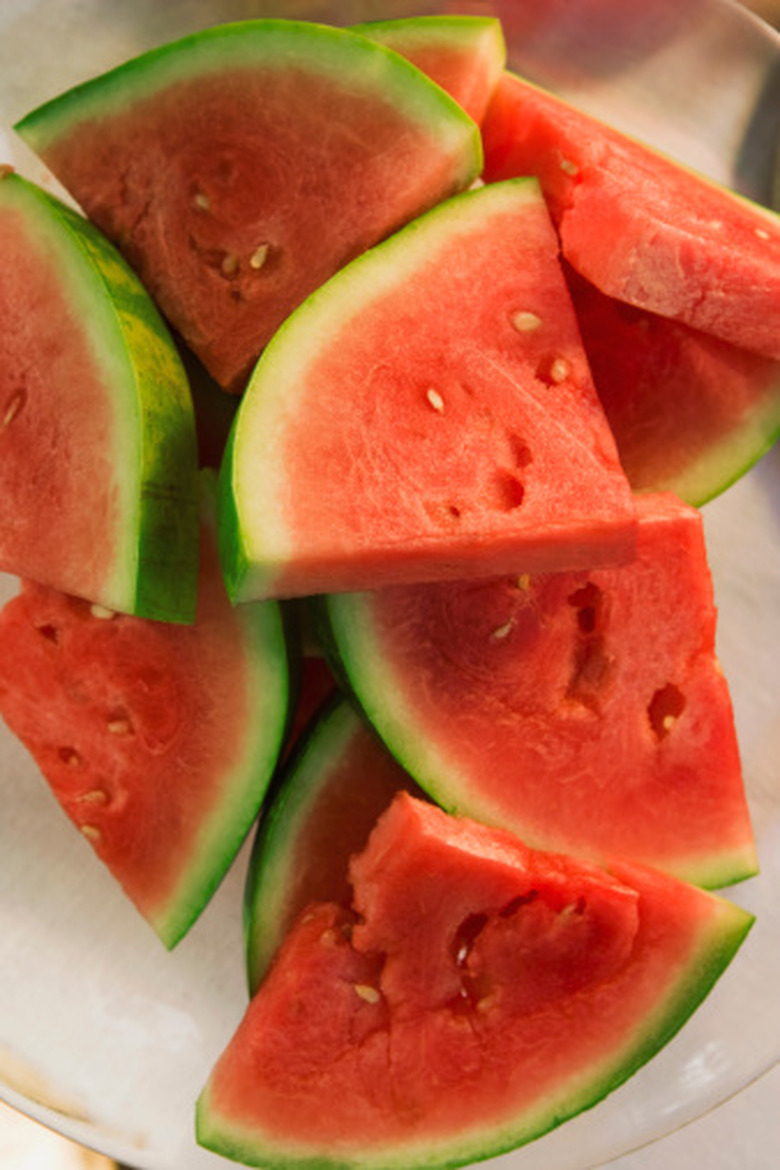How To Grow Watermelons In Colorado
Things Needed
- Shovel
- Fertilizer
- Plant insulators
Tip
It can be difficult to tell when to harvest your watermelons, and varieties take about 85 days to reach full maturity. There may be a creamy yellow tinge to the soil underneath the melon. You can also thump your melons to determine when they are ready to pick. A ripe melon has a dull, muffled sound when tapped with your knuckles.
Though Colorado is well-suited to grow the popular Rocky Ford variety of cantaloupes, watermelons often struggle to survive here. Their long maturation time and intolerance to frost limit their size in Colorado's short growing season. By maximizing their sun exposure and growth time, you can cultivate watermelons in select areas.
Step 1
Select a variety that produces small melons and matures quickly. Sugar Baby, Fordhook and New Hampshire Midget are three varieties that perform well with a shorter season.
Step 2
Plan your outside planting for two weeks after the last day of frost, which generally comes around the middle of May, but fluctuates each year. This allows the soil to heat up sufficiently, as watermelon seedlings require a soil temperature between 60 and 90 degrees Fahrenheit to germinate. You can start watermelon seeds indoors before this, but you must transplant very carefully to avoid damaging their fragile roots. As an alternative, start your seeds in a pot, which you can later transfer outdoors, or use a hot bed.
Step 3
Prepare your soil using aged manure, compost or nitrogen fertilizer to create a bed that drains well and has a pH between 6.2 and 6.8. Create mounds three to four feet apart that drain excess water away from the plant.
Step 4
Plant your watermelon seeds in a hot location with maximum sun exposure and away from sources of humidity. Sow about six seeds 1 1/2 inches deep in damp soil on each mound, and don't water again until the seedlings emerge. Thin the seedlings down to the strongest two or three plants on each mound.
Step 5
Protect your plants from harsh mountain storms and cold weather. Use plant blankets or water-filled insulators to raise the temperature of the soil and plants when the weather is cool. Watermelon plants are a very tender warm-season vegetable and will not withstand frosts or freezing temperatures.
Step 6
Do not overwater your watermelon plants. They only require between 1 and 1 1/2 inches of water each week, which is best applied with irrigation rather than a sprinkler.
References
- "Wyman's Gardening Encyclopedia"; Donald Wyman; 1986
